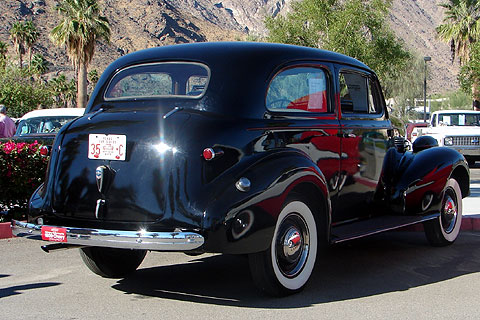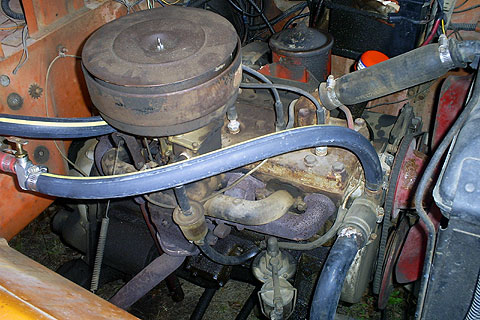I go to car shows frequently and see lots of nice cars. Unfortunately, sometimes I see a nice restoration marred by a few details. I wonder why owners go to great effort and expense to restore a vehicle, then cut a few corners resulting in less than a prize winning job. "Attention to detail" is key to a award winning restoration.

|
| These narrow whitewalls on this 1950's Hudson are wrong. |
Wheels, covers and hub caps and tires seem to be a particular problem. This includes the wrong ones for the particular model, year or even make. There were often subtle differences between years. On some models, wheels were painted black when wheel covers were used and only painted the body color when hub caps were installed. Also the top-of-the-line model's wheel covers were seldom used, often not even available, on bottom-of-the-line models. Look at catalogs and factory photos to see what was used "back then."
Narrow white sidewall tires are often seen on models built years before they were "invented." The somewhat narrower whitewalls did not start appearing until the late 1950s and very thin ones not until the mid-1960s. Before World War II and immediately afterwards, whitewalls were rarely used especially on lower priced cars, and never on trucks. Radial tires can help older cars handle significantly better. However, keep the right tires mounted on the right wheels for showtime.

|
| While they look great, few prewar Chevrolets originally came with whitewalls. |
Be careful when reinstalling bumpers. Overtorquing the bolts can distort their shape and damage the chrome plating. Make sure bumpers, trim, doors, and so forth line up. American cars of the 1960s and 1970s were notorious for their misaligned seams, but not as bad as seen on some very amateur restorations. Use OEM headlights, or at least have the glass patterns on both, four on quad highlight systems, match.
Do not use nuts, bolts and washers from Home Depot or Ace Hardware. Factory installed automotive nuts and bolts usually have different plating as well as quite different head designs. Manufacturers also use different types of lock washers and locking tabs than the common household ones.
Use new old stock (NOS) or accurate reproductions of mechanical parts. For example if you cannot find the original equipment oil filter, at least use the right brand, not one with a Checkers, Pep Boys or K-Mart logo. This also goes for radiator caps, spark plug wires, accessory belts and so forth.

|
| A grungy engine compartment is inconsistent with a nice exterior. Not only clean the engine, but also find the source of oil, fuel, coolant, grease and exhaust leaks . |
If possible use OEM radiator and heater hoses. If not available find the closest match in a molded hose that you can, even if it means trimming ends to make them fit. Don't use generic flex hose. Also important are OEM-style clamps -- worm gear clamps were seldom used as original equipment.
If your cannot find the exact replacement battery, at least make sure it is the right brand and correct size. A nice under-hood restoration can be marred by a poor, jury-rigged battery installation. Use the correct cables and connectors, and wiring harness. Automakers seldom, if ever, used crimped-on type connector or electrical tape.
If the car is a convertible, make sure the top is made of the correct material and is the right color. Make sure snaps and other fasteners are reasonably accurate.
Attention to detail includes replacing worn-out pedals dented door sills, torn gearshift boots, scratched and broken knobs and so forth. Try to use NOS or reproduced replacements. Replace warped faded and discolored rear package shelves and visors. Re-paint or rechrome the backside of the inside rearview mirror, it can be seen from the outside. Years ago, upscale models often used different steering wheels rather than plain Jane ones. Many times the latter had horn buttons only, and no horn rings.
If you drive your collector vehicle regularly you may want to install a modern radio and even a CD player. If you do, set it up so you can replace it quickly with the one used "back then." Consider one of the "looks like an old one, plays like a new" setups. Modern speakers can be hidden behind old grilles and panels. Use the correct antenna.




